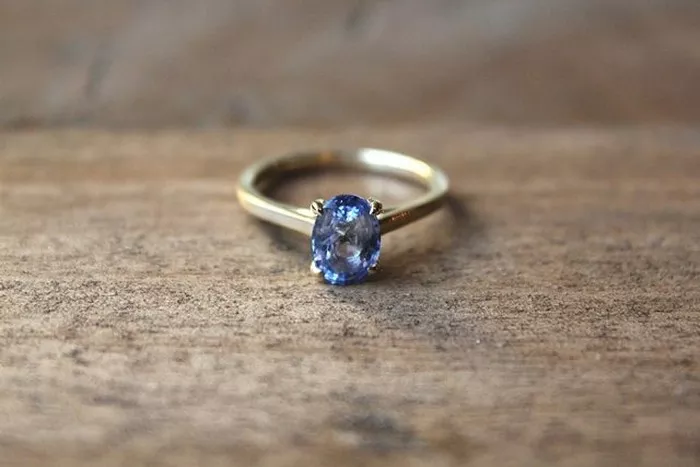The formation of bright yellow sapphires, renowned for their vibrant hues and elegant beauty, is a fascinating process governed by a combination of geological, chemical, and temporal factors. As a jewelry appraiser, understanding these conditions is crucial for assessing the authenticity, quality, and rarity of these gemstones. This guide will provide a detailed introduction to the conditions that contribute to the formation of bright yellow sapphires, exploring the role of trace elements, geological processes, and the unique characteristics of their mineral composition.
The Role of Trace Elements
At its core, the color of a sapphire is determined by trace elements present within the mineral corundum, the crystalline form of aluminum oxide (Al₂O₃). While pure corundum is typically white or colorless, the introduction of trace elements such as iron (Fe), titanium (Ti), chromium (Cr), and vanadium (V) can lead to the development of various colors. In the case of yellow sapphires, the presence of iron is primarily responsible for the gemstone’s warm, yellow hues.
However, the mere presence of iron is not sufficient to produce a bright yellow sapphire. The concentration and distribution of iron within the corundum crystal structure play a critical role. If iron is present in higher concentrations, it can result in darker shades of yellow or even brown. Conversely, lower concentrations and specific crystal orientations can lead to the development of lighter, more vibrant yellow hues.
Geological Processes
The formation of corundum, and by extension yellow sapphires, begins with the melting and crystallization of rocks in the Earth’s crust. This process typically occurs under high temperatures and pressures, often in metamorphic rocks such as schists and gneisses. As these rocks undergo metamorphism, the aluminum and oxygen present within them combine to form corundum crystals.
The development of yellow sapphires requires specific geological conditions that favor the incorporation of iron into the corundum crystal structure. This often occurs in igneous or metamorphic rocks that have undergone extensive alteration, allowing for the introduction of trace elements such as iron. In some cases, the presence of hydrothermal fluids, which carry dissolved minerals, can also play a role in the incorporation of iron and other trace elements into the corundum crystals.
Crystallization and Growth
Once the corundum crystals form, their growth and development are influenced by the surrounding geological environment. The temperature, pressure, and chemical composition of the surrounding rocks can all affect the crystal’s shape, size, and internal structure. These factors, in turn, influence the gemstone’s optical properties, including its color and clarity.
For yellow sapphires, the slow and controlled crystallization of corundum crystals is essential for producing gemstones of high quality. Rapid crystallization can lead to the formation of inclusions and defects within the crystal structure, which can detract from the gemstone’s overall appearance and value.
Time and Geological History
The formation of yellow sapphires is not a quick process. It often spans millions of years, with the gemstones undergoing various stages of metamorphism, crystallization, and weathering. The geological history of the region in which the sapphires form also plays a significant role. Regions with complex geological histories, characterized by multiple tectonic events and metamorphic processes, are more likely to produce a diverse range of gemstone colors and qualities.
Extraction and Processing
Once formed, yellow sapphires must be extracted from their host rocks through mining operations. This process can be challenging, as the gemstones are often embedded within hard, difficult-to-access rocks. Mining operations can involve opencast mining, underground mining, or a combination of both, depending on the specific geological conditions and the location of the sapphire deposit.
Once extracted, the raw sapphires undergo a series of processing steps to reveal their true beauty. This includes cutting and polishing, which are essential for maximizing the gemstone’s brilliance and clarity. Skilled gemcutters carefully evaluate each sapphire’s unique characteristics, such as its color, clarity, and crystal orientation, to determine the best cutting and polishing techniques.
Conclusion
In conclusion, the formation of bright yellow sapphires is a complex process governed by a combination of geological, chemical, and temporal factors. The presence and concentration of iron within the corundum crystal structure, along with specific geological conditions and crystallization processes, all contribute to the development of these gemstones’ vibrant yellow hues. Understanding these conditions is crucial for jewelry appraisers, as it allows them to assess the authenticity, quality, and rarity of yellow sapphires with greater accuracy and confidence.While mining and processing these gemstones can be challenging, the resulting beauty and elegance of bright yellow sapphires make them a highly sought-after addition to any jewelry collection. Whether set in elegant rings, pendants, or earrings, these gemstones continue to captivate and inspire jewelry enthusiasts and collectors worldwide.
Related topic:
- Can Yellow Sapphire Be Worn in Silver?
- Emerald Cut Purple Sapphire: How to Distinguish
- Emerald Cut Diamonds and Sapphires: How to Match the Most Beautiful Combinations


